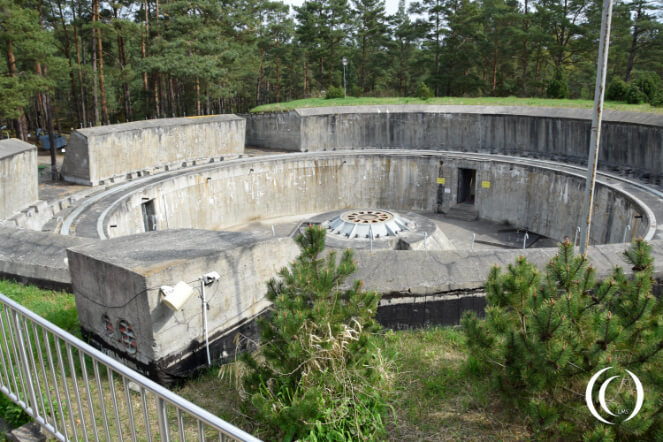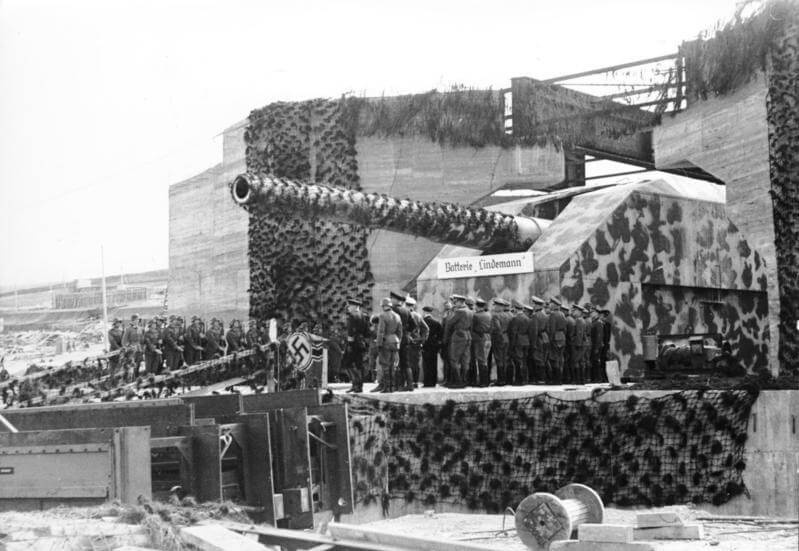




History
After the Battle for Hell the Hel Peninsula the gun and Anti-Aircraft batteries came under German rule. The German Navy strengthened the Peninsula with three huge gun emplacements and an observation tower. They named the Battery Schleswig Holstein like the battleship which took part in the Battle of Westerplatte and the Battle for Gdynia at the start of the war for Poland.
The Battery was designated as MKB 2 / MAA 119, MKB is short for Marine Küstenbatterie, Naval Coastal Battery.
The gun emplacements had a 2 stories concept with railway lines and a Gantry crane position on concrete pillars to place the huge gun and lift the 21 metres long barrel. The gun crew consisted of 88 men, 20 of them handled the gun from inside the cupola. They named the three gun emplacements, Anton, Bruno and Caesar, it is unclear if these are the original German names or post war names. In close vicinity are two ammunition storage bunkers.




The 40.6cm SK/C34 Gun – the Adolfgun
This naval gun was designed by Krupp for the H-Class Battleships. The H-Class would be bigger and stronger than the Tirpitz and Bismarck , the Bismarck Class, but these ships were never completed.
The guns could reach a distance of 56 km (35 miles) and a trained crew could reach a rate of 2 rounds per minute, which is quite something for a gun this size. The barrel length of the Adolfgun or Adolfkanone in German is over 21 metres with a bore of 406 mm and weighs 158 metric tons. A shell weighs 1020 to 1030 kg depending on the shell used.
The 40.6cm SK/C34 designation means it has a bore of 406 mm, SK = Schnelladekanone which means quick loading cannon, C= goes to Konstruktionsjahr and that is the year of design in 1934.





In total eleven of the 40,6 cm guns were built, seven were placed in Norway, one was lost en route and three were placed in Poland. After their training shots in May and June of 1941 the Adolfguns were dismounted and moved to Calais and placed in Batterie Lindemann. Named after the Captain of the Bismarck, Ernst Lindemann. From here they saw active service and fired at Dover in England, crossing the 34 kilometres of the English Channel. They fired 2226 times on England from 1941 until 1944. Together with Battery Todt – four 38 cm guns, Battery Oldenburg – two 21 cm guns, eleven K5 – 28 cm railway guns, and other Batteries and Railway Guns they bombed England over the Strait of Dover.



Visit
Muzeum Obrony Wybrzeża is the Polish name for the museum. In front of the museum are numerous objects related to the Second World War, like sea mines, torpedoes, anti-aircraft guns, naval guns and more.

